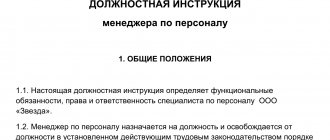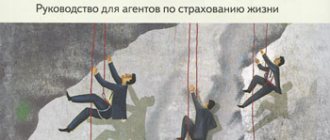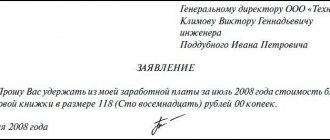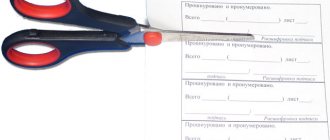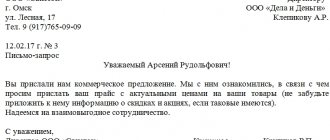An audit is a procedure for an independent assessment of the activities of an organization, system, process, project or product to identify risks and the occurrence of conflict situations. An audit can be internal, when it is carried out by the organization itself, and external, when third-party specialists are hired on a contractual basis to evaluate activities in a particular area of the company. Most often, the term “audit” is used in relation to checking the financial statements of companies, but there are other types, for example, personnel audit. Many have heard this phrase, but they have no idea what the essence of this procedure is. Today we will talk specifically about the audit of personnel documentation, we will tell you why it is necessary, when and by whom it is carried out.
Why do you need a personnel audit?
Let’s say right away that a personnel audit is an optional event and is not carried out very often. However, we believe that such a procedure should be carried out for:
— preparation for an inspection check of compliance with the requirements of labor, archival, pension, migration legislation, etc.;
— assessing the risks associated with a specific situation (risks that may arise during an inspection by regulatory authorities, when considering a labor dispute in court, during trade union control, etc.);
— improving the professionalism of HR specialists (training based on violations);
— assessing the professionalism of employees of the HR department;
— developing an action plan to correct violations;
— optimizing the work of the personnel service (minimizing costs, building a system of holding people accountable, rewards, etc.).
In addition, the audit will help to assess and analyze the state of personnel documents when transferring documents during reorganization, change of management (including the management of the personnel service), dismissal (reception) of personnel department employees (HR).
https://youtu.be/J12RaCwesBc
Result of internal audit of personnel documentation
Based on its results, experts draw up a report. This document contains all the results:
- assessment of document flow for a certain period;
- availability of necessary regulations;
- assessing the compliance of their content and design with legal requirements;
- analysis of papers allocated for these purposes;
- assessing the compliance of personnel procedures with legal requirements and the interests of employees;
- correlation of violations and liability for them, which threatens the organization as a legal entity and officials.
The report on the results of such an audit must contain references to specific legislative norms and regulations, violations of which were recorded in the organization’s work, detailed recommendations for correcting all shortcomings, and an assessment of the risks associated with inspections of the State Labor Inspectorate or in the event of a labor conflict.
On your own or hire a third-party company?
Let us repeat that you can conduct a personnel audit on your own, or you can use the services of third-party companies, fortunately there are a sufficient number of them and there is plenty to choose from. At the same time, a personnel audit is a very responsible matter, because it is directly related to the company’s confidential documents.
If you plan to choose an external auditor, it is important that the service is provided by qualified specialists who have been working in this field for several years. Ask how often the auditing company provides services for checking personnel records, and whether among its clients there are organizations similar to yours in the type of activity. Remember that the services of a reputable consulting firm that offers an audit of personnel documentation and has professionals on its staff cannot be cheap.
The success of conducting a personnel audit by specialists from a third-party organization also depends on how the company is prepared to interact with auditors. Therefore, most often, before the start of an audit, a working group is created, consisting of representatives of the company invited to conduct the audit, and representatives of the customer company. The composition and number of invited auditors are largely determined by the timing and scope of the work to be done, but the participation of lawyers and specialists in the field of documentation support is definitely required.
If there is no desire to attract third-party specialists, and funding for this is not included, it is possible to conduct a personnel audit on your own. However, having set the appropriate task for the personnel department of the institution, it should be remembered that they are not always ready to give an objective assessment of the current situation, since they will actually check their work. Moreover, full-time employees can “turn a blind eye” to some errors, since they are the ones who will have to correct them.
We believe that if, nevertheless, the choice is made in favor of internal audit, it is best to create a small structural unit for this purpose or a commission, which must include a specialist who understands labor legislation and personnel records management, but who is not dependent on those persons whose work he will be checked, for example, by a lawyer.
Who conducts the HR audit and is it possible to conduct it on your own?
The lack of legislative regulation of personnel audits gives a certain freedom in choosing the persons who have the right to conduct the procedure. What options exist in this case?
There are several of them:
- Contact specialists from a third-party organization that employs experienced and qualified auditors with experience in conducting personnel audits. This will allow for an external audit.
- Hire an appropriate specialist on the company staff (the job title can be selected at the discretion of the company director) and conduct an audit of personnel records on your own. In this case, the employee will audit the organization on an ongoing basis or conduct it at a certain frequency (for example, monthly or quarterly). On the one hand, this approach will provide the opportunity to constantly monitor the status of personnel documents, personnel services, etc., on the other hand, it will entail the need to find a competent specialist (lawyer), develop his job description, constantly pay him, provide leave, deduct tax payments and insurance premiums.
- Form an audit commission in the organization. It is formed from among existing employees and may include the head of the human resources department, accountant, lawyer, etc.
- Establish an audit department in the company. This option involves certain material costs, since you will have to not only hire employees, but also develop regulations for the department, define its tasks and functions. Suitable for large companies.
Thus, the management of the organization itself has the right to either decide whether to conduct a personnel audit or not, or to appoint a specialist (or group of specialists) to analyze the company’s personnel activities.
Regulatory framework for checking personnel documentation
To begin with, let's name the main regulations that must be followed when checking personnel documentation. The main ones are:
— Decree of the Government of the Russian Federation of April 16, 2003 N 225 “On work books” (together with the Rules for maintaining and storing work books);
— Resolution of the Ministry of Labor of the Russian Federation dated October 10, 2003 N 69 “On approval of the Instructions for filling out work books” (hereinafter referred to as the Instructions for filling out work books);
— Resolution of the State Statistics Committee of the Russian Federation dated January 5, 2004 N 1 “On approval of unified forms of primary accounting documentation for recording labor and its payment” (hereinafter referred to as Resolution N 1);
— Order of the Ministry of Culture of the Russian Federation dated August 25, 2010 N 558 “On approval of the List of standard management archival documents generated in the process of activities of state bodies, local governments and organizations, indicating storage periods”;
— Federal Law of July 27, 2006 N 152-FZ “On Personal Data”;
— GOST R 6.30-2003 “Unified documentation systems. Unified system of organizational and administrative documentation. Requirements for document preparation";
- Labor Code.
In addition, there are a sufficient number of departmental regulations that regulate office work, the procedure for conducting personal affairs, or regulate other aspects of labor relations. These acts also need to be studied and applied when inspecting personnel documentation.
What are we checking?
We will not consider how a consulting organization conducts an audit on the basis of a civil contract, but will focus on internal audit. The order in which it is carried out depends on the goals. You can check all areas of maintaining and processing personnel documents, or you can check only one area, for example, employment contracts. In any case, the first step to starting an audit will be issuing an order to conduct an audit, which appoints an inspector or creates an audit commission. In the order, you can determine the topic of the inspection.
Here is an example of an order.
Municipal budgetary educational institution
"Secondary school N 72"
May 16, 2012 Nizhny Novgorod
Order No. 42
on conducting a personnel audit
To improve the work of the HR department and minimize the risks associated with improper maintenance of personnel documentation,
I order:
1. Conduct an internal personnel audit on the topic “Registration of hiring and provision of annual paid leave” from May 28 to June 5, 2012.
2. Appoint A.G. Volkova, deputy director for educational work, as chairman of the audit commission.
3. Include in the commission:
— Deputy Director for Administrative and Economic Work O. L. Zolotov;
— teacher of Russian language and literature V.S. Paramonov;
— legal adviser Lopukhov I.R.
4. Submit a report on the inspection performed by 06/08/2012.
5. Entrust control over the execution of this order to the Deputy Director for Educational Work Volkova A.G.
Director Komova /L. V. Komova/
The following have been familiarized with the order:
Volkova A. G. 05/16/2012, Volkova
Zolotova O. L. 05/16/2012, Zolotova
Paramonova V. S. 05/16/2012, Paramonova
Lopukhov I. R. 05/16/2012, Lopukhov
If the topic of the audit is determined, then the head of the HR department only has to prepare the necessary documents. If the audit is carried out when there is a change in the management of the personnel service or when transferring cases from one specialist to another, it is necessary to determine the list of documents to be inspected.
Remember that there is a list of mandatory documents that any organization must have, regardless of its legal form and form of ownership. Such documents include:
1. Staffing table. Let’s say right away that there is only a mention of this document in the Labor Code, but there is no indication that its preparation is mandatory. Resolution No. 1 unified the form of this document - T-3. Let us note that regulatory authorities, be it the state labor inspectorate, the prosecutor's office or tax authorities, almost always request it: the structure of the institution, the wage fund, allowances and additional payments to employees are clear from the schedule.
2. Vacation schedule. The binding nature of this document is not questioned, since Art. 123 of the Labor Code of the Russian Federation directly states that annual paid vacations are provided to employees in accordance with the vacation schedule approved by the employer, taking into account the opinion of the representative body of employees at least two weeks before the new year. The form of schedule T-7 is also unified by Resolution No. 1.
3. Personal cards - forms T-2 and T-2GS (MS). They must be kept for each employee, since the employer is obliged to familiarize the employee with each entry made in the work book against signature in his personal card - in it, by virtue of clause 23 of the Rules for maintaining and storing work books, the entry made in the work book is repeated.
4. Personal matters. The obligation to maintain them is established for certain categories of workers, which include state civil servants, municipal employees, customs officials, etc.
The procedure for managing personal files of state civil servants is established by Decree of the President of the Russian Federation of May 30, 2005 N 609 “On approval of the Regulations on the personal data of state civil servants of the Russian Federation and the management of his personal file.” For civil servants of a constituent entity of the Russian Federation, the procedure for maintaining a personal file is established by the regulations of that constituent entity. For example, for employees of the city of Moscow it is determined by Decree of the Mayor of Moscow dated June 15, 2011 N 44-UM, and for civil servants of St. Petersburg - by Decree of the Government of St. Petersburg dated June 30, 2008 N 773.
5. A time sheet (forms T-12, T-13) must also be in each institution, since Art. 91 of the Labor Code of the Russian Federation obliges the employer to keep records of the working time actually worked by each employee.
Note! Previously, government bodies, management of state extra-budgetary funds, management of territorial state extra-budgetary funds, local self-government, budgetary institutions, bodies providing cash services for the execution of budgets of the budget system of Russia used a time sheet in form 0504421, approved by Order of the Ministry of Finance of the Russian Federation dated December 30, to record working hours. 2008 N 148n. However, due to the fact that it has lost force since January 1, 2011 (Order of the Ministry of Finance of the Russian Federation dated December 1, 2010 N 157n), the form from Order of the Ministry of Finance of the Russian Federation dated December 15, 2010 N 173n - 0301008 is used, and this is an exact copy of the T-13 form.
6. Work books of the established form are the main document about the employee’s work activity and length of service. Every employer (with the exception of employers who are individuals who are not individual entrepreneurs) is required to maintain them for each employee who has worked for him for more than five days, in the case where the work for this employer is the main one for the employee (Article 66 of the Labor Code of the Russian Federation).
The work book contains information about the employee, the work he performs, transfers to another permanent job and dismissal, as well as the grounds for termination of the employment contract and information about awards for success in work. Information about penalties is not entered into the book, except in cases where the disciplinary sanction is dismissal.
Note! Check whether a person responsible for maintaining work books has been appointed, and whether they are all registered in the book for recording the movement of work books and their inserts. In addition, look at the entries in the work books - they must be made on the basis of orders.
7. Employment contracts or service contracts. An employment contract is an agreement between an employer and an employee, according to which the employer undertakes to provide the employee with work for a specified labor function, provide working conditions, pay wages on time and in full, and the employee undertakes to personally perform the labor function determined by this agreement, comply with internal labor rules regulations in force at this employer.
8. Orders for personnel:
— about hiring (forms T-1, T-1a);
— about transfer to another job (forms T-5, T-5a);
— on granting leave (forms T-6, T-6a);
— about sending on a business trip (forms T-9, T-9a);
— on incentives (forms T-11, T-11a);
— on termination (termination) of an employment contract (forms T-8, T-8a).
These unified forms must be used by all organizations operating on the territory of the Russian Federation, regardless of their form of ownership (clause 2 of Resolution No. 1).
When checking these orders, you need to make sure that there are documents that provide the basis for their issuance. Quite often they are missing - there is a reference in the order to an agreement, statement or other document, but the document itself is not there. This is a violation.
9. Orders on main activities. It is necessary to check the presence of the manager’s signatures and approval visas. Let us remind you that such orders must be kept separately from orders for personnel.
Please note that you need to not only check the availability of these documents, but also pay attention to how they are compiled. For example, due to the requirements of Art. 67 of the Labor Code of the Russian Federation, an employment contract is concluded in writing, drawn up in two copies, each of which is signed by the parties. One copy is given to the employee, the other is kept by the employer. Receipt of a copy of the employment contract by the employee must be confirmed by his signature on the copy kept by the employer. Article 57 of the Labor Code of the Russian Federation defines the conditions that must be included in the text of the employment contract.
But with a service contract everything is different. In addition to the fact that the federal law defines its content, Decree of the President of the Russian Federation dated February 16, 2005 N 159 approved a sample form of a contract for performing the state civil service and filling a position in the state civil service. Therefore, check that contracts comply with legal requirements not only in content, but also in form. And in terms of content, we note that, for example, the most important object of verification of dismissal orders will be the indication in them of the reason and basis for dismissal. Based on Art. 84.1 of the Labor Code of the Russian Federation, they must be indicated in strict accordance with the wording of the Labor Code of the Russian Federation or other federal law and with reference to the relevant article, part of the article, paragraph of the article. When checking the content of employment contracts, pay attention to the presence of conditions that, by virtue of Art. 57 of the Labor Code of the Russian Federation are required to be included in their text.
Advantages of hiring a third-party company for internal audit of HR documents
An event of this kind is aimed at finding shortcomings and mistakes made by company specialists in their work. Often, when organizing an inspection, the commission includes (or even heads it) employees directly responsible for maintaining personnel records. With this approach, the quality of the analysis seriously drops, which is understandable: it is much more difficult to find, notice, record and analyze your own mistakes than others.
In general, the effectiveness of analysis performed by employees will be objectively lower than that of third-party experts. When assessing the document flow of another company, experts remain attentive and impartial; their perception is not distorted by involvement in the work process; they look “from the outside” and see a much clearer picture.
Therefore, to conduct a competent, comprehensive, high-quality personnel analysis, it is worth inviting a trusted third-party company. By entrusting this task to a reliable consulting firm, you will receive a range of services to build a strong modern business, ready to withstand competition and rapidly changing market conditions. Such cooperation will significantly save financial resources and avoid many difficulties when communicating with regulatory authorities.
Ordering a personnel audit from is the right management decision, the results of which you will be satisfied with.
In addition to assessing the quality, legality and accuracy of record keeping, we offer:
- Identifying problems with document flow in the enterprise and searching for the causes of their occurrence.
- Development of a cost optimization plan by increasing the efficiency of intermediate management.
- Assessing the staffing structure and its compliance with the tasks facing the business.
- Identification of risk factors in the existing operating system.
- Personnel assessment.
- Identification of sources of conflicts.
- Drawing up recommendations for effective human resource management.
Regularly conducting assessments of this kind with our help is an excellent investment in business development and future profits.
Local regulations, books, log books
Let's start with the fact that, on the basis of Art. 8 of the Labor Code of the Russian Federation, employers, with the exception of employers - individuals who are not individual entrepreneurs, adopt local regulations containing labor law norms, within their competence in accordance with labor legislation and other normative legal acts containing labor law norms, collective agreements, agreements. The provisions of such acts should not worsen the position of the employee in comparison with what is established by labor legislation.
The following documents also need to be checked.
1. Internal labor regulations. According to Art. 189 of the Labor Code of the Russian Federation, this document regulates the procedure for hiring and dismissing employees, the basic rights, duties and responsibilities of the parties to an employment contract, working hours, rest periods, incentives and penalties applied to employees, as well as other issues of regulating labor relations with a given employer.
2. Labor protection instructions. They usually consist of occupational safety requirements before, during and after work, and also contain emergency procedures. These instructions are developed based on the position of the employee, his profession or the type of work he performs, on the basis of inter-industry or industry standard instructions on labor protection, inter-industry or industry rules on labor protection, safety requirements set out in the operational and repair documentation of equipment manufacturing organizations, technological documentation of the organization, taking into account specific production conditions based on Methodological recommendations.
3. Regulations on the storage and protection of personal data of employees (or another document establishing the procedure for their storage and use). The preparation of this local act is mandatory due to the requirements of Art. 87 Labor Code of the Russian Federation.
4. Regulations on remuneration or other local regulations regulating the system of remuneration in the institution and bonuses for employees. This provision is mandatory by virtue of Art. 135 of the Labor Code of the Russian Federation - remuneration systems, including tariff rates, salaries (official salaries), additional payments and allowances of a compensatory nature, including for work in conditions deviating from normal conditions, systems of additional payments and incentive allowances and bonus systems, are established by collective agreements , agreements, local regulations in accordance with labor legislation and other regulations containing labor law standards.
In addition to those mentioned, there are other necessary documents - mandatory for some organizations due to the specifics of their activities, for example, a shift schedule, a list of positions with irregular working hours, agreements on full individual liability, provisions on commercial or other secrets protected by law.
If the institution has developed other local regulations regulating some area of labor relations, we recommend checking them for the presence of conditions that worsen the position of the employee in comparison with the established labor legislation, and legal force (if necessary, the opinion of the representative body of employees has been taken into account, approved whether the document is by the head of the institution, whether the employees are familiar with the act, etc.). It can be:
- collective agreement;
— agreement on collective financial responsibility;
— provisions on adaptation of workers;
— regulations on the procedure for passing the probationary period;
— regulations on certification of employees.
We recommend that you pay special attention to checking job descriptions. On the one hand, they are not mandatory, on the other hand, on the basis of Art. 57 of the Labor Code of the Russian Federation, a mandatory condition of an employment contract is a labor function, and it is prescribed either in the employment contract or, in order not to overload it, in the job description. Therefore, sometimes instructions are simply necessary.
Let's move on to journals, among which, as among local regulations, there are mandatory ones.
| Magazine name | Normative act |
| Book of accounting of the movement of work books and inserts for them | Clauses 40, 41 of the Rules for maintaining and storing work books, the form is established by Appendix 3 to the Instructions for filling out work books |
| Receipt and expense book for accounting of work book forms and inserts in it | The same |
| Inspection log | Article 16 of the Federal Law of December 26, 2008 N 294-FZ “On the protection of the rights of legal entities and individual entrepreneurs in the exercise of state control (supervision) and municipal control.” The form of the journal is approved by Order of the Ministry of Economic Development of the Russian Federation dated April 30, 2009 N 141 |
In addition to the above-mentioned mandatory journals, the institution may maintain other journals to systematize information on personnel records, such as:
— journals of employment contracts, orders for personnel, personal files, certificates of incapacity for work;
— journal of familiarization with local regulations;
— journal for issuing travel certificates and certificates.
When checking journals and books of account, pay attention to their design. All sheets of magazines must be numbered, the magazines themselves must be laced, sealed with a wax seal or sealed and certified by the head of the organization. No corrections to log books are permitted. It is also necessary to make sure that in the book for recording the movement of work books and their inserts, all columns are filled in, there are no corrections in it, this book is bound and sealed.
Note. Analysis of the document registration and systematization system is very important, since it provides information about how the document storage system is organized in the institution.
Algorithm of actions for restoring personnel documents
The first step is to find out how things are now:
- why it was necessary to restore accounting, and what led to this;
- what operating hours, remuneration system and internal regulations apply in the company;
- which regulatory documents have already been developed by the company, which require further development, and which need to be developed from scratch.
After this, it is necessary to conduct a full analysis of the availability of personnel documents and compare them with database registers (if they exist).
The minimum set of documents that every employer must have
Are common:
- internal labor regulations;
- staffing schedule;
- work record book;
- vacation schedule;
- time sheet;
- Regulations on the processing of personal data of employees
For each employee:
- an employment contract with additional agreements for all changes;
- employment history;
- personal card T-2;
- order of admission (relocation, dismissal).
Make a table with a list of employees and note which of these documents are available and which are missing.
When the picture becomes clear, you can begin the gradual restoration of personnel documentation.
More details
Software audit
Currently, most institutions maintain personnel documentation using specialized software products, which means that they will also have to be checked.
When inspecting, be sure to check whether the program provides the ability to maintain personnel documentation in accordance with the requirements of current legislation (it is possible that the developers of the software product “lost” certain necessary details), whether all unified forms are contained in the program, how often it is updated, whether all forms of documents relevant.
The next important aspect that needs to be checked is the order of access to the software and (or) created personnel documentation. In this case, it is necessary to find out which of the company’s employees is involved in the processing of personnel data, and make sure that the system excludes the possibility of access to electronic forms of documents for those employees whose job responsibilities do not include working with such data.
An audit of the software of the HR department will allow you to identify possible channels of unauthorized access or loss of personnel information, as well as assess the feasibility of using a specific software product.
So, during the audit of personnel documentation, the presence of mandatory documents, correctness of execution, as well as compliance of the content of documents with legal requirements are checked.
It is better to document the audit process itself, so that later when drawing up the final report you do not forget anything important.
Features when conducting audits
One of the fundamental criteria for a personnel audit is the professionalism of the auditor. This is a job that requires being unbiased; the auditor is required to evaluate employees dispassionately and as objectively as possible, without giving free rein to personal likes and dislikes, as well as compassion and pity. No matter how cruel it sounds, HR audit, first of all, adheres to a policy of openness and honesty.
Criteria for assessing performance
Often, a personnel audit is characterized by the preparation of test papers, both professional and personal.
Quite often, the results of work without any leniency have a great impact on the professional level of the employee and can subsequently lower it.
Recruitment agencies often refer to a single qualification reference book, according to which the qualifications of employees are assessed, for this purpose the following widely used working criteria are used:
- The qualifications of the employee’s work and his suitability for the position he occupies.
- The ability of employees to manage their working time effectively.
- Ability to work under professional stress and pressure from a superior employee.
- Assessment of the usefulness and complementarity of personnel.
Again, when assessing personnel, auditors take into account the correctness of the organization and effectiveness of management's personnel policies, as well as the level of staff turnover within this organization.
Based on the results of the audit, the experts make a decision on the compliance and, accordingly, non-compliance of the personnel with their positions, on what needs to be improved in the company’s policy.
They also write in the report about the negative actions of management and ways to eliminate them.
Results of the audit of HR documents
The last stage of document verification will be the preparation of a report that will describe the current state of affairs, indicating problem areas and possible risks. The report also usually provides recommendations for eliminating identified violations of labor laws and shortcomings, and also informs about possible punishment if violations are not eliminated (see page 45).
In the case of an audit of personnel documentation when there is a change in the management of the personnel service or a specialist in personnel records management, in addition to the conclusion, it is necessary to draw up an act of acceptance and transfer of cases, the appendix to which will be a list of work books (indicating the full name of the owner, the series and number of the work book and inserts (if any)).
In conclusion, we note that when conducting periodic audits of personnel documentation, the employer has the opportunity to avoid sanctions from regulatory authorities - fines, suspension of the organization’s activities, criminal liability. In addition, if the audit is carried out in-house, HR employees have the opportunity to improve their professional level by identifying and correcting their own mistakes.
And remember, proper maintenance of personnel documentation is the key to successfully resolving conflicts with employees and regulatory authorities.
| Identified violations | Violated normative act | Possible punishment | Recommendations for correction |
| 1. Staffing and wage documents | |||
| A salary range has been established in the staffing table | Articles 3, 20, 22, 132 of the Labor Code of the Russian Federation. The principle of equal pay for equal work has been violated | Administrative fine from 1,000 to 50,000 rubles. or administrative suspension of the organization’s activities for up to 90 days (Article 5.27 of the Code of Administrative Offenses of the Russian Federation) | Develop a differentiated wage system, for example, introduce additional payments to employees who have additional qualities |
| 2. Work records | |||
| A record of hiring has been made in the “Promotion Information” section. | Clause 3.1 Instructions for filling out work books | Administrative fine from 1,000 to 50,000 rubles. or administrative suspension of the organization’s activities for up to 90 days (Article 5.27 of the Code of Administrative Offenses of the Russian Federation) | Prepare an insert in the work book and transfer to it the entries erroneously entered in the “Information about promotion” section |
| 3. Orders to dismiss an employee | |||
| The grounds for termination do not indicate part of the article of the Labor Code | Forms T-8, T-8a, art. 84.1 Labor Code of the Russian Federation | Administrative fine from 1,000 to 50,000 rubles. or administrative suspension of the organization’s activities for up to 90 days (Article 5.27 of the Code of Administrative Offenses of the Russian Federation) | To be specified in the future |
| 4. Logs of registration and accounting of personnel documents | |||
| There is no log of control activities | Article 16 of Federal Law N 294-FZ | — | Design |
| 5. Other violations | |||
| There is no check for disqualification when hiring employees for management positions | Article 32.11 of the Code of Administrative Offenses of the Russian Federation | Administrative fine up to 100,000 rubles. (Article 14.23 of the Code of Administrative Offenses of the Russian Federation) | Before concluding an employment contract with employees applying for a management position, send a request about the possible disqualification of an individual to the Federal Tax Service, which maintains a register of disqualified persons |
Types and stages of audit of personnel documentation
An audit of personnel documents can be complete when all parts of personnel records are analyzed without exception. And selective, which affects:
— certain areas of office work;
— papers on a particular employee;
— all aspects of interaction with personnel, based on a representative sample of acts and reports.
It is highly advisable to conduct an internal audit of personnel documents for at least the last three years. It is this period of the employer’s activities that the tax service, Social Insurance Fund, Pension Fund of the Russian Federation and the prosecutor’s office usually consider in their audits.
It will take from 7 to 14 working days to evaluate the documentation for the specified period. The time depends on the number of employees and the number of local regulations. The audit of personnel documents should be entrusted to a specialist who has experience in formalizing relations with personnel, as well as legal training. Experience in passing or organizing inspections by regulatory structures will be a big plus.
The procedure consists of the following steps:
- Creation of a working group in the company.
- It may include lawyers, accounting and personnel specialists, as well as experts invited from outside.
- Compiling a list of issues to be considered and choosing the type of procedure: complete or selective.
- Development of a clear step-by-step plan, which necessarily includes:
- assessment of the correctness of documentation;
- determining the compliance of local regulations with legal requirements;
- identifying errors and shortcomings in papers;
- compiling a list of missing and unreliable regulations that need to be supplemented.
- Conduct analysis as planned.
- Preparation and signing of a report on the results of the audit, containing data on all identified violations, a list of risks, recommendations for eliminating shortcomings and optimizing office work.
- Correction of detected problems, revision of local regulations.



